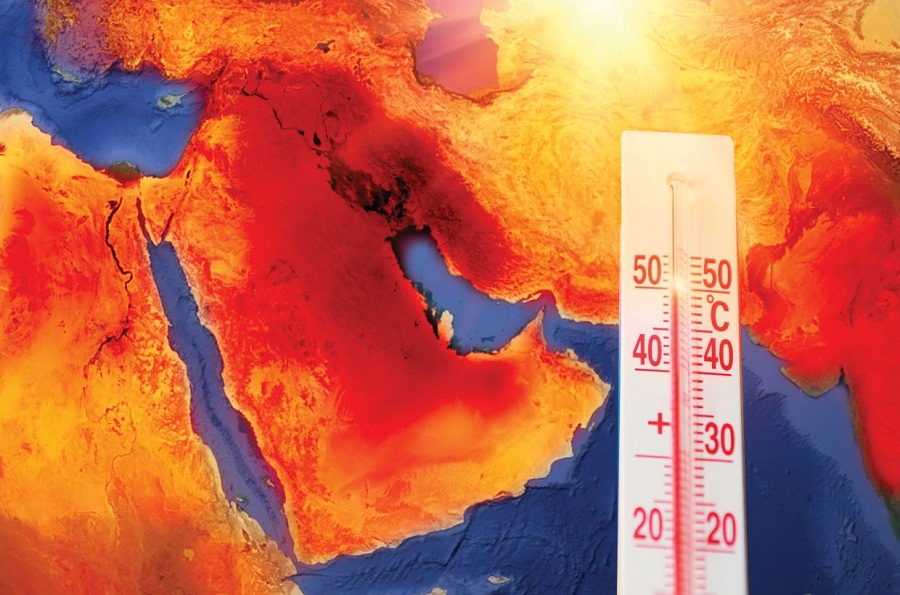
Published :
Updated :

Heatwaves have become increasingly lethal as the planet experiences the impacts of climate change. With scorching temperatures and prolonged periods of extreme heat, these events pose significant threats to human health and well-being.
As we are experiencing mild heatwaves in Bangladesh exacerbated by frequent load-shedding, here are the top 10 deadliest heatwaves ever recorded, highlighting the staggering temperatures that claimed many lives.
European Heatwave (2003)
The European Heatwave of 2003 claimed an estimated 70,000 lives across the continent. It brought unprecedented temperatures, with some regions experiencing highs of 40 to 44° Celsius (104 to 111° Fahrenheit).
During this deadly heatwave, France recorded its highest temperature ever at 44.1° Celsius.
Russian Heatwave (2010)
The Russian Heatwave in 2010 was one of the longest and deadliest heatwaves in the nation's history. With temperatures exceeding 40° Celsius for several weeks, Moscow recorded its highest temperature at 38.2° Celsius. The heatwave claimed over 50,000 lives and led to devastating wildfires.
Indian Heatwave (2015)
In 2015, India experienced a severe heatwave that affected millions of people. Temperatures soared above 50° Celsius in some regions, with Phalodi in Rajasthan recording a scorching 51°. The heatwave resulted in approximately 2,500 deaths, emphasising the vulnerability of marginalised communities.
Pakistani Heatwave (2015)
Simultaneous with the Indian Heatwave, Pakistan faced a deadly heatwave in 2015. Karachi, the country's largest city, witnessed temperatures peaking at 45° Celsius. The lack of preparedness and infrastructure contributed to over 2,000 fatalities during this heatwave.
European Heatwave (2019)
The European Heatwave in 2019 shattered temperature records across several countries. During this heatwave, France experienced its highest recorded temperature at a scorching 46° Celsius. The event resulted in approximately 1,500 deaths, primarily impacting the elderly and those with pre-existing health conditions.
North American Heatwave (1980)
In 1980, a brutal heatwave engulfed central and eastern regions of the United States and parts of Canada. The temperature in Dallas, Texas, reached a staggering 45° Celsius, while many other cities experienced record-breaking highs. The heatwave claimed over 1,250 lives.
Australian Heatwave (2009)
Australia, known for its scorching summers, experienced a deadly heatwave in 2009. The temperatures soared to unprecedented levels, with cities like Melbourne recording their highest temperature at 46.4° Celsius. The heatwave, accompanied by widespread wildfires, claimed more than 430 lives.
European Heatwave (2006)
In 2006, another heatwave struck Europe, affecting countries in the south, including Spain, Italy, and Greece. The highest temperature during this heatwave reached 47.3° Celsius in Córdoba, Spain. The event led to over 400 deaths.
Chinese Heatwave (2013)
China experienced a severe heatwave in 2013, particularly affecting the eastern and southern regions. Shanghai recorded its highest temperature at 40.6° Celsius. The heatwave claimed more than 350 lives and significantly impacted agriculture and infrastructure.
South Asian Heatwave (2020)
In May 2020, South Asia endured a severe heatwave, impacting parts of India and Bangladesh. The highest temperature recorded during this heatwave was 50° Celsius in Churu, India. The scorching temperatures resulted in over 300 fatalities, exacerbating the challenges faced by communities grappling with the COVID-19 pandemic.
Heatwaves, accompanied by record-breaking temperatures, push the limits of human endurance. As climate change intensifies, it is crucial to prioritise mitigation and adaptation strategies to minimise the severity and frequency of such deadly events.


 For all latest news, follow The Financial Express Google News channel.
For all latest news, follow The Financial Express Google News channel.